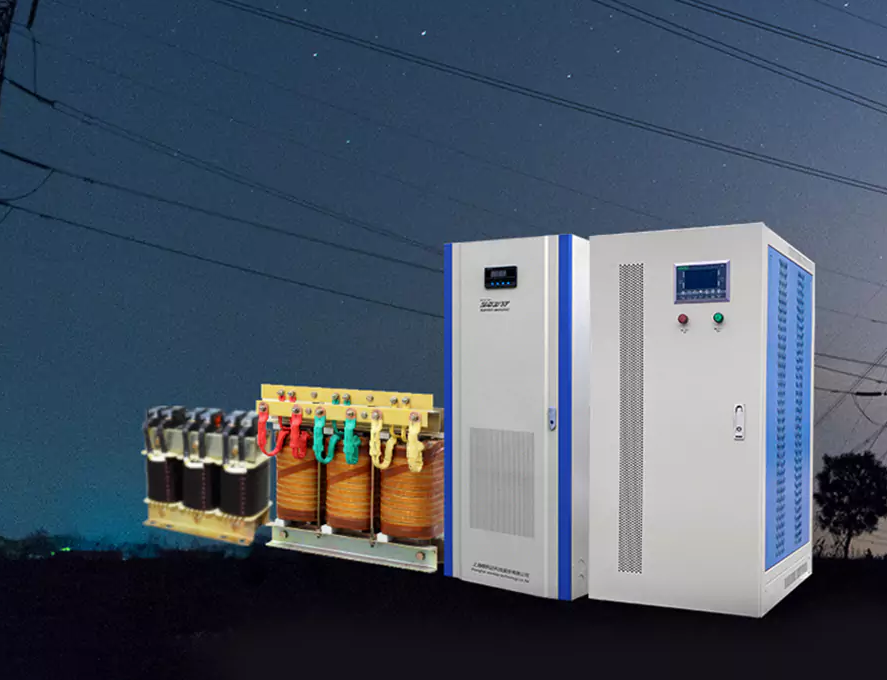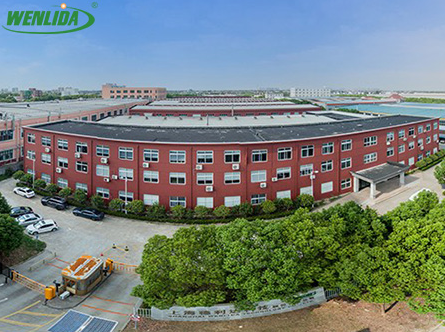Are Three-Phase Stabilizer / Regulator Essential for Industrial Voltage Stability?
Ensure stable voltage levels in your industrial or commercial electrical systems with Three-Phase Stabilizer / Regulator. Learn how these devices work, their importance in maintaining voltage stability, and their applications across various industries. Explore different types available in the market, their benefits, and considerations for choosing the right one. Discover how Wenlida, a trusted manufacturer, provides reliable solutions for voltage regulation, ensuring uninterrupted operation and protection for your equipment.

Introduction to Three-Phase Stabilizer / Regulator
1.1 Understanding Three-Phase Stabilizer / Regulator
Three-phase stabilizers or regulators are sophisticated electrical devices designed to ensure a consistent and stable voltage supply in three-phase electrical systems. Unlike single-phase systems, which operate with one live wire and one neutral wire, three-phase systems employ three live wires, making them more complex. The primary function of Three-Phase Stabilizer / Regulator is to maintain a steady voltage level across all three phases, regardless of fluctuations in the input voltage.
1.2 Importance of Stable Voltage in Three-Phase Systems
In industrial and commercial settings, where heavy machinery, sensitive equipment, and critical processes rely on uninterrupted power, stable voltage is paramount. Fluctuations in voltage can lead to equipment malfunctions, data loss, production downtime, and even damage to machinery. Three-Phase Stabilizer / Regulator play a crucial role in preventing such issues by ensuring that the voltage remains within acceptable limits, thereby safeguarding equipment and maintaining operational efficiency.
1.3 Significance in Industrial and Commercial Applications
In industries such as manufacturing, where precision and consistency are vital, stable voltage is non-negotiable. From automated assembly lines to robotic operations, any deviation in voltage can disrupt production schedules and compromise product quality. Similarly, commercial facilities like data centers, hospitals, and telecommunications hubs rely on stable voltage to ensure continuous operation of critical systems and services. Without Three-Phase Stabilizer / Regulator, the risk of downtime and its associated costs significantly increase.
How Does Three-Phase Stabilizer / Regulator Work
2.1 Principles of Operation
Three-Phase Stabilizer / Regulator operate on the principle of voltage regulation, wherein they continuously monitor the incoming voltage and adjust the output voltage to maintain a consistent level. These devices utilize advanced electronic circuits and control mechanisms to achieve precise regulation across all three phases. By detecting deviations in voltage, they activate corrective measures to stabilize the output, ensuring that it remains within the specified range.
2.2 Voltage Regulation Mechanisms
Stabilizers/regulators employ various voltage regulation mechanisms, including transformers, thyristors, and microprocessor-based control systems. Transformers are commonly used for voltage adjustment in large-scale applications, while thyristor-based regulators offer fast response times and high accuracy. Modern stabilizers utilize microprocessor control to monitor voltage levels in real-time and make instantaneous adjustments, providing superior performance and reliability.
2.3 Detection and Adjustment of Voltage Fluctuations
These devices employ sensors and feedback mechanisms to detect voltage fluctuations in the input supply. Upon detecting a deviation from the desired voltage level, the stabilizer/regulator activates internal circuits to adjust the output voltage accordingly. This dynamic response ensures that the connected equipment receives a stable and consistent power supply, regardless of external factors such as grid disturbances or load variations.
Applications of Three-Phase Stabilizer / Regulator
3.1 Common Industries and Sectors
Three-Phase Stabilizer / Regulator find widespread use across various industries and sectors, including manufacturing, healthcare, telecommunications, and information technology. In manufacturing plants, they ensure smooth operation of production machinery and prevent costly downtime due to voltage fluctuations. Data centers rely on stabilizers/regulators to protect sensitive IT infrastructure and prevent data loss during power disturbances.
3.2 Specific Applications
Within manufacturing, stabilizers/regulators are indispensable for CNC machines, robotic systems, and other automated equipment that require precise voltage control. In hospitals, where medical equipment and life support systems depend on uninterrupted power, stabilizers/regulators play a critical role in maintaining patient safety and healthcare delivery. Similarly, telecommunications networks rely on stable voltage to ensure continuous connectivity and prevent service outages.
3.3 Real-World Scenarios
Imagine a manufacturing plant that produces automotive parts using CNC machining centers. Any voltage fluctuation could lead to errors in the machining process, resulting in defective parts and production delays. By installing Three-Phase Stabilizer / Regulator, the plant ensures consistent voltage supply to the CNC machines, minimizing the risk of costly defects and maximizing production efficiency. Similarly, a data center that hosts critical business applications relies on stabilizers/regulators to safeguard servers and networking equipment from power surges and fluctuations, thereby maintaining uptime and protecting valuable data.

Types of Three-Phase Stabilizer / Regulator
4.1 Variety of Options
The market offers a range of Three-Phase Stabilizer / Regulator to suit different applications and requirements. These include static voltage regulators, dynamic voltage regulators, and hybrid models that combine various technologies for optimal performance.
4.2 Static vs. Dynamic Voltage Regulators
Static voltage regulators maintain a constant output voltage by adjusting the impedance of the connected load, making them suitable for applications with relatively stable loads. Dynamic voltage regulators, on the other hand, use electronic components to provide fast and accurate voltage regulation, making them ideal for dynamic loads and applications with rapid load changes.
4.3 Pros and Cons
Static voltage regulators are valued for their simplicity, reliability, and low maintenance needs. Although static voltage regulator and dynamic voltage regulators generally respond quickly, they are particularly suitable for addressing high-frequency fluctuations in load voltages. On the other hand, dynamic voltage regulators provide superior performance with faster response times but may be more complex and necessitate periodic maintenance.
Benefits of Using Three-Phase Stabilizer / Regulator
5.1 Improved Efficiency and Equipment Protection
One of the primary benefits of installing Three-Phase Stabilizer / Regulator is improved efficiency and equipment protection. By ensuring a stable voltage supply, these devices prevent voltage-related damage to sensitive equipment, extend the lifespan of machinery, and minimize energy waste due to voltage fluctuations.
5.2 Cost Savings
In addition to equipment protection, stabilizers/regulators help businesses save money by reducing downtime, maintenance costs, and equipment replacement expenses. By preventing voltage-related failures and disruptions, businesses can maintain continuous operation and avoid costly production losses or service interruptions.
5.3 Case Studies and Examples
For example, a manufacturing company that specializes in semiconductor fabrication relies on Three-Phase Stabilizer / Regulator to maintain precise voltage control in its cleanroom environment. Any voltage deviation could jeopardize the integrity of the fabrication process and lead to defective chips, resulting in significant financial losses. By investing in high-quality stabilizers/regulators, the company ensures consistent performance and product quality, ultimately enhancing its competitiveness in the market.
Considerations for Choosing Three-Phase Stabilizer / Regulator
6.1 Factors to Consider
When selecting a three-phase stabilizer/regulator, several factors should be taken into account, including the capacity requirements, voltage regulation range, and environmental conditions. It’s essential to choose a stabilizer/regulator that can handle the anticipated load without exceeding its capacity, as overloading can lead to overheating and reduced lifespan.
6.2 Installation and Maintenance
Proper installation and regular maintenance are critical for the reliable operation of Three-Phase Stabilizer / Regulator. It’s important to follow manufacturer guidelines and ensure that the device is installed correctly and securely. Routine inspections and servicing help identify any issues early on and prevent potential failures, ensuring uninterrupted operation and optimal performance.
6.3 Integration with Existing Systems
Finally, compatibility with existing electrical systems should be considered when choosing a three-phase stabilizer/regulator. Whether retrofitting an older facility or installing new equipment, it’s essential to ensure seamless integration with the existing infrastructure to minimize downtime and disruptions. Working with a reputable manufacturer like Wenlida can provide assurance of product quality and compatibility, along with reliable technical support and after-sales service.
Conclusion
Three-Phase Stabilizer / Regulator play a critical role in maintaining stable voltage levels in industrial and commercial electrical systems, ensuring reliable operation of equipment and preventing costly downtime. By continuously monitoring voltage fluctuations and making real-time adjustments, these devices provide a consistent power supply, safeguarding sensitive equipment and enabling uninterrupted production processes.
With a variety of options available in the market, it’s essential to choose the right three-phase stabilizer/regulator based on capacity requirements, voltage regulation range, environmental conditions, and integration considerations. Partnering with a reputable manufacturer like Wenlida can provide assurance of product quality, compatibility, and reliable technical support, helping businesses maximize the benefits of stable voltage regulation and achieve optimal performance and efficiency in their operations.
